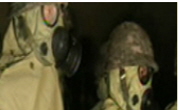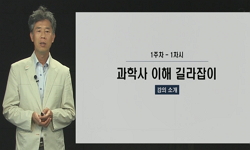국내 교육대학원의 화학 교육과정과 미국 대학원의 화학 교육과정을 분류하여 바람직한 교육대학원의 교과과정을 구성하기 위하여 비교․분석을 실시하였다. 국내 교육대학원 9곳과 국...
http://chineseinput.net/에서 pinyin(병음)방식으로 중국어를 변환할 수 있습니다.
변환된 중국어를 복사하여 사용하시면 됩니다.
- 中文 을 입력하시려면 zhongwen을 입력하시고 space를누르시면됩니다.
- 北京 을 입력하시려면 beijing을 입력하시고 space를 누르시면 됩니다.
국내외 과학(화학) 교육과정 비교분석 = A Comparative Analysis of Science Education Curriculum in Korea and the United States
한글로보기https://www.riss.kr/link?id=T10800946
- 저자
-
발행사항
서울 : 명지대학교 교육대학원, 2005
-
학위논문사항
학위논문(석사) -- 명지대학교 교육대학원 , 교육학과과학(화학)교육 , 2005. 8
-
발행연도
2005
-
작성언어
한국어
- 주제어
-
발행국(도시)
서울
-
형태사항
ⅴ, 51 p. ; 26cm
-
일반주기명
지도교수 :백운필
- 소장기관
-
0
상세조회 -
0
다운로드
부가정보
국문 초록 (Abstract)
국내 교육대학원의 화학 교육과정과 미국 대학원의 화학 교육과정을 분류하여 바람직한 교육대학원의 교과과정을 구성하기 위하여 비교․분석을 실시하였다. 국내 교육대학원 9곳과 국외 대학원 3곳을 대상으로 교과 내용학과 교과 교육학, 실험 및 평가로 나누어 교과과정과 총 이수학점을 분류하였다. 국내 교육대학원과 국외 대학원을 비교․분석한 결과 국내 대학원은 교과명칭이 단순하고 교과 내용학에 치우친 경향을 보이며, 교과 내용학과 교과 교육학으로 교과과정이 분류되어 있는 반면 국외 대학원의 경우 교과명칭을 분류하기 쉽지 않았고 실험과 실습에 주된 관점을 보였으며, 석․박사 학위 과정과 교육실습 과정으로 분류되어 있다. 또한, 국내 교육대학원은 일반 대학원 형식의 교육과정을 보이며, 연구․기타라는 다소 애매한 교과목을 보이는 반면에 국외 대학원은 집중양성 또는 차별화 된 프로그램 형식의 교육과정을 보이고, 필수․연수라는 대학원에서 제시하는 교과목을 이수하게끔 하는 교육과정을 보인다. 총 이수학점의 경우 국내는 30학점 이상인 교육대학원의 대다수이고, 국외의 경우 대학원에 따라 이수여부의 다양함을 보이고 있다. 전체적으로 볼 때, 국내는 연구법과 같은 교육의 개념이 대부분인 반면에, 국외의 경우 실습과 연수, 학생들을 가르치는 기술이 대부분이다. 교과과정 및 학점이수 상황에서도 미국의 교육대학원은 그 기준이 다양하며 각 교육대학원의 특성이 반영되어 있는 형식을 보였다.
이와 같이 교과 내용학에만 치중해 있는 국내의 화학 교육과정에 대해 본 연구자는 교육대학원의 실정과 특성에 맞는 화학 교과과정의 체계적인 정립을 위하여 연구될 필요가 있다고 제언해 본다.
다국어 초록 (Multilingual Abstract)
A comparative analysis of chemical education curriculum in US and Korean universities is being performed to gain useful reference data so as to develop a newly organized and improved system for the next generation in Korea. Chemistry courses and credi...
A comparative analysis of chemical education curriculum in US and Korean universities is being performed to gain useful reference data so as to develop a newly organized and improved system for the next generation in Korea. Chemistry courses and credits in a total of nine chemistry departments of universities in Korea and three in the United States were selected to be compared based on major course, professional course, experiment, and valuation. Each university in Korea has a simple name for its curriculum, tends to lean to major course, and has divided the curriculum into major course and professional course. However, it was not easy to classify the name of the curriculum in the case of US universities, which mainly pay attention to experiment and practice and classify their courses into major course and professional course.
In addition, Korean universities show general graduate school and somewhat ambiguous courses such as study/etc., but US universities show intensive or their own specialized courses as well as courses such as requirement/ internship, which their graduate school requires. Concerning total number of credits for a major, most Korean universities require more than 30 credits, while US universities have a variety of standards. As a whole, while Korea mostly has concepts of education such as comparative, the U.S. mostly has techniques of teaching such as practice. Korean chemistry curriculum, leaning mostly to major course, seem to need to be studied for the systematic thesis which suits the current graduate school situation and character. However, the condition of the curriculum or credits in US universities have diverse standards and reflect their own uniqueness.
목차 (Table of Contents)
- 목차
- 표 목차 = ⅱ
- 그림목차 = ⅲ
- 국문초록 = ⅳ
- 제 1장 서론 = 1
- 목차
- 표 목차 = ⅱ
- 그림목차 = ⅲ
- 국문초록 = ⅳ
- 제 1장 서론 = 1
- 제 1절 연구의 목적 = 1
- 제 2절 연구방법 및 제한점 = 2
- 제 2장 본론 = 4
- 제 1절 이론적 배경 = 4
- 1. 교육과정 일반론 = 4
- 2. 교육내용의 선정과 조직 = 10
- 3. 현대 화학교육과정의 개혁동향 = 14
- 4. 선행연구 = 17
- 5. 대학의 교육과정 = 19
- 제 2절 연구 결과 = 22
- 1. 국내 교과과정 분류 = 22
- 2. 국외 교과과정 분류 = 32
- 제 3절 분석 및 논의 = 35
- 1.대학별 교과과정 분석 = 35
- 2. 총 이수학점과 전공 필수/선택 및 교직과목의 비교 = 37
- 3. 교직/실습 과목의 분석 = 38
- 제 3장 결론 = 39
- 참고문헌 = 46
- Abstract = 50












